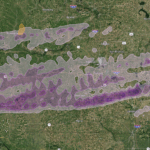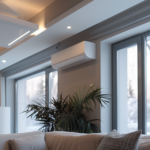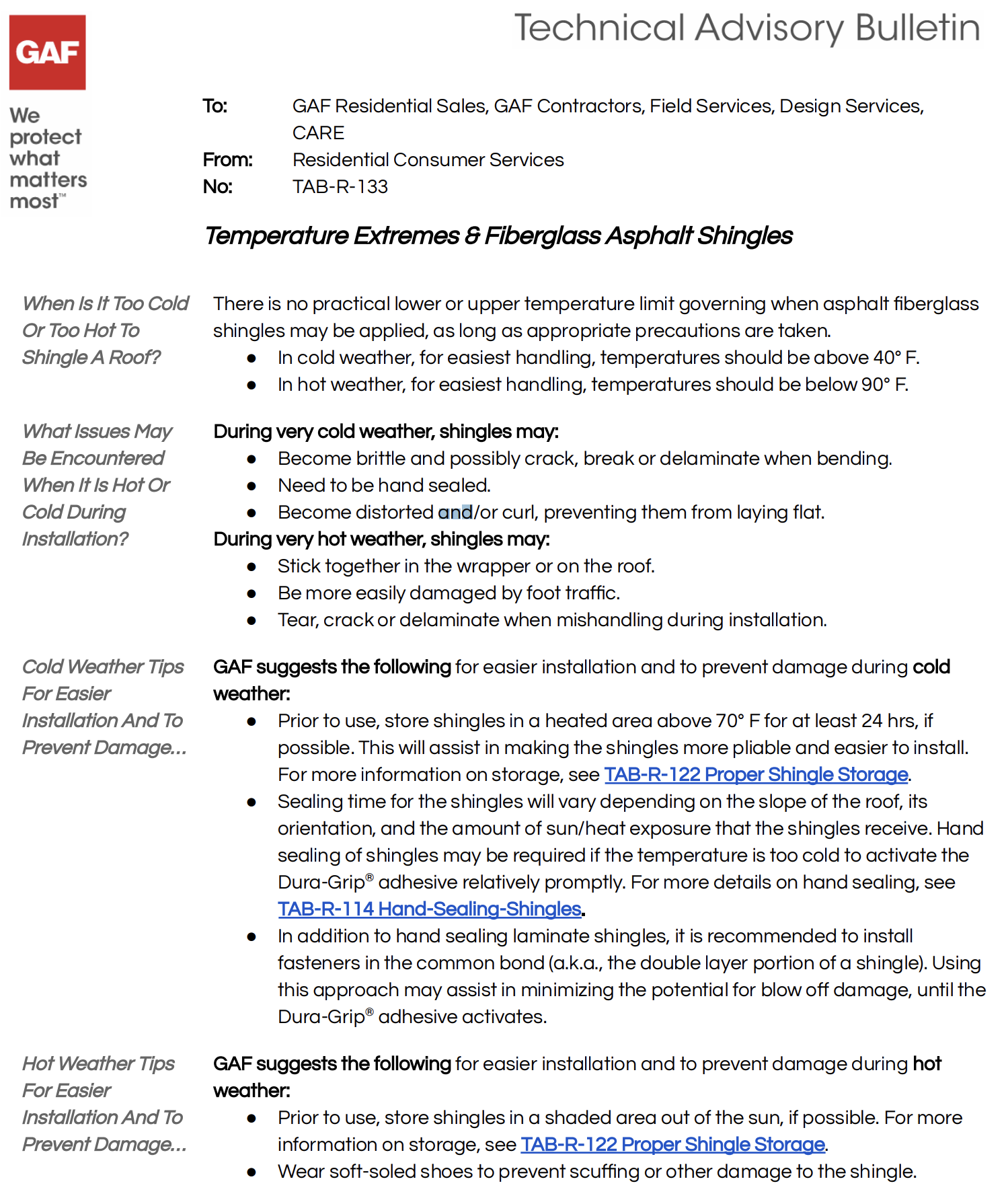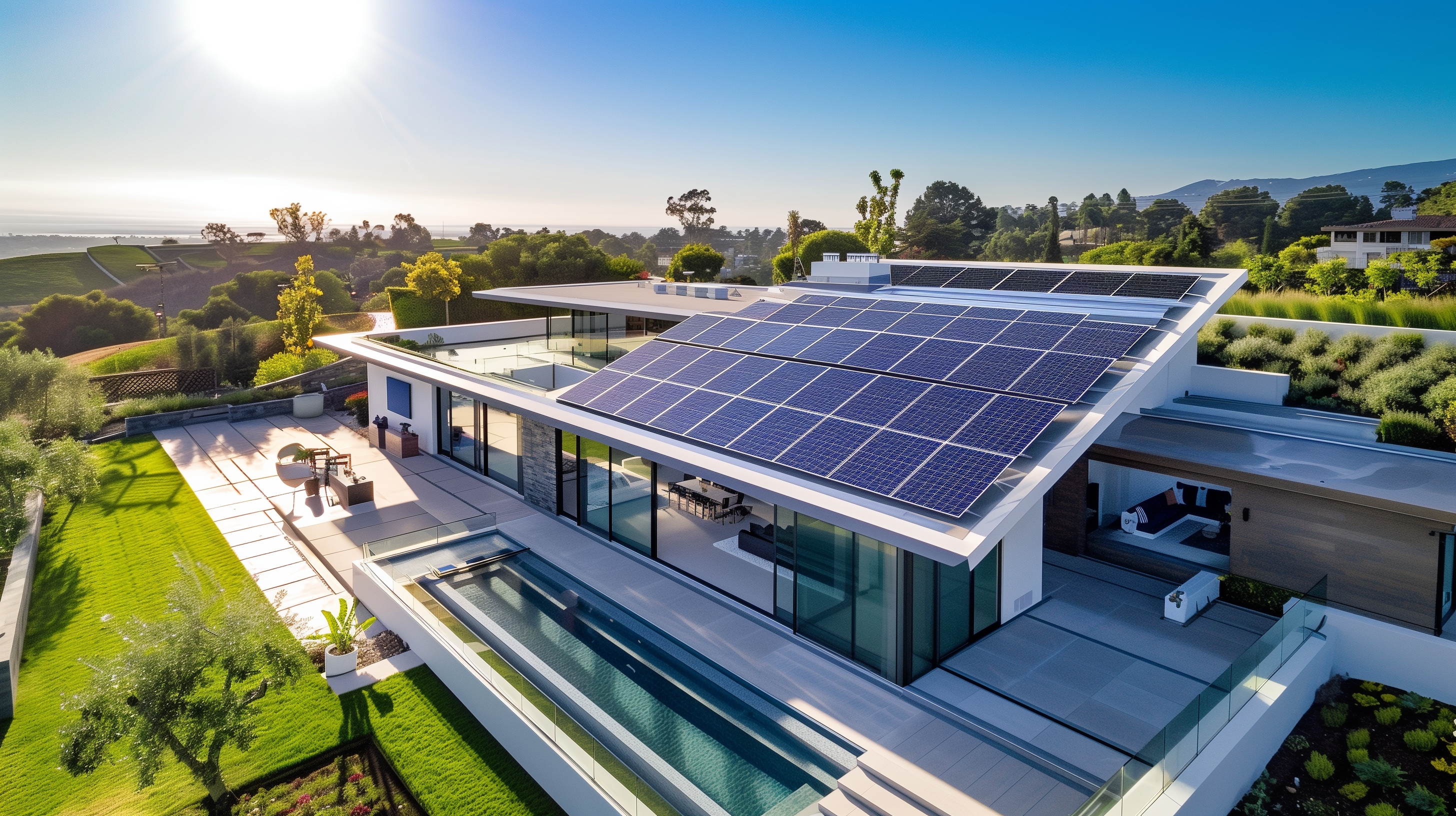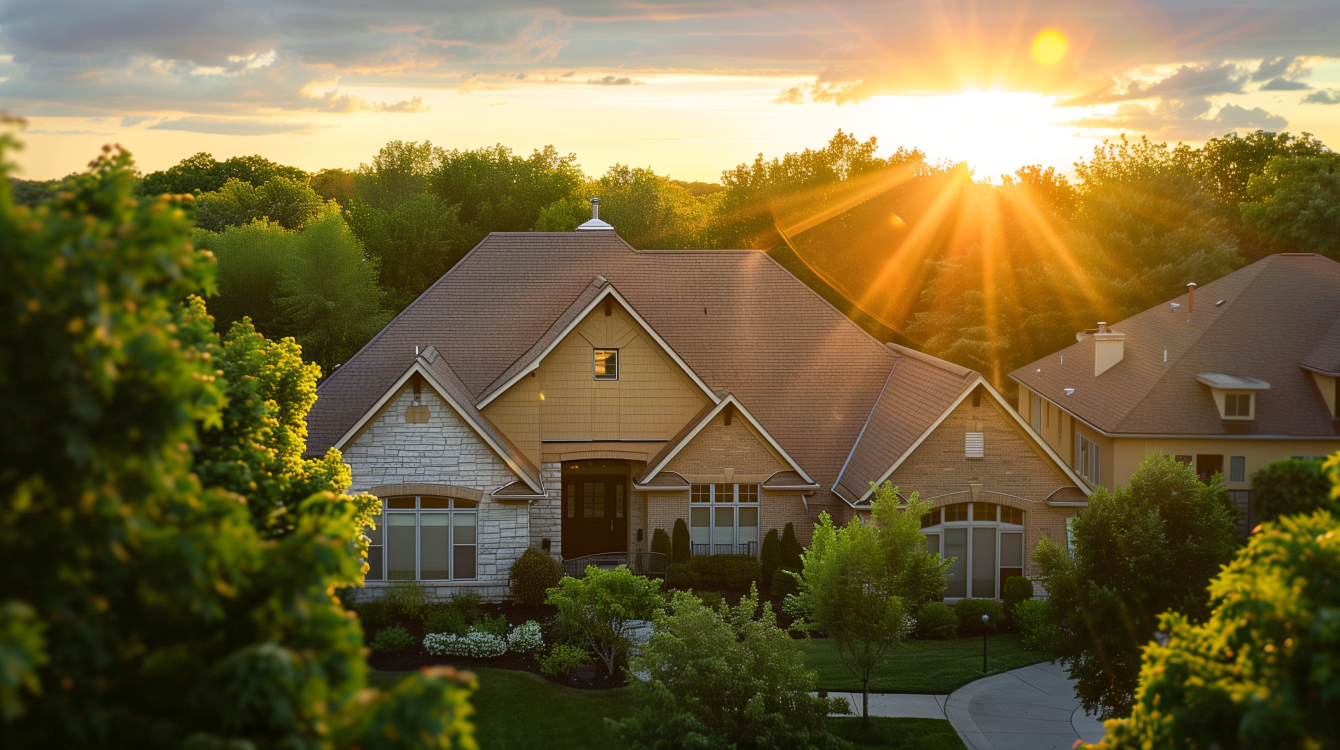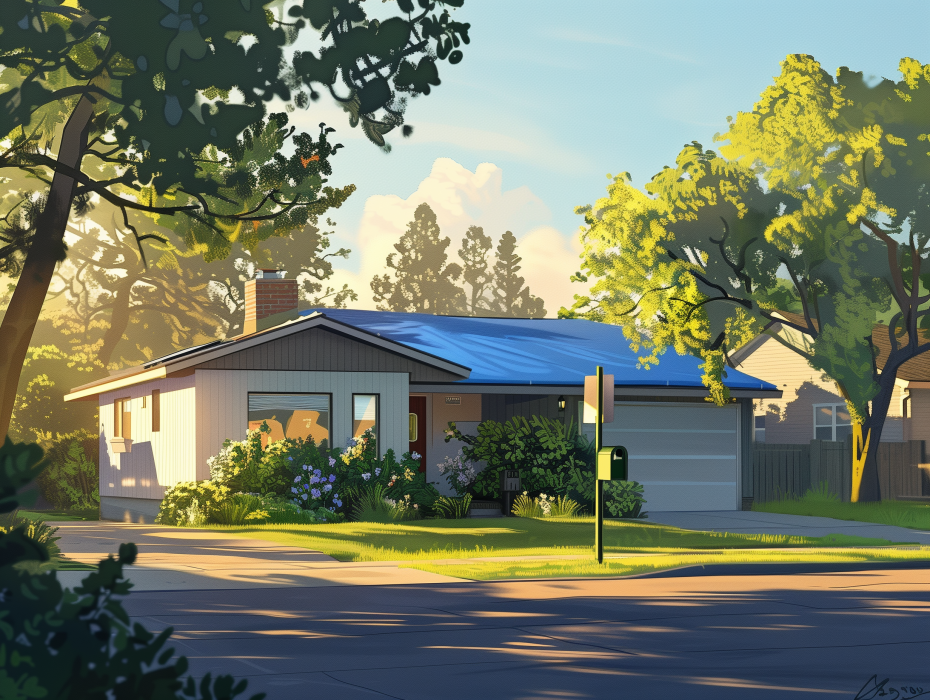When Is It Too Cold or Too Hot to Shingle a Roof?
There is no strict lower or upper temperature limit for applying asphalt fiberglass shingles, as long as appropriate precautions are taken. For the easiest handling:
- Cold Weather: Temperatures should be above 40° F.
- Hot Weather: Temperatures should be below 90° F.
Issues Encountered During Temperature Extremes
Cold Weather:
- Brittleness: Shingles may become brittle and crack, break, or delaminate when bent.
- Sealing: Shingles may need to be hand sealed.
- Distortion: Shingles may become distorted or curl, preventing them from laying flat.
Hot Weather:
- Stickiness: Shingles may stick together in the wrapper or on the roof.
- Foot Traffic: Shingles may be more easily damaged by foot traffic.
- Handling: Shingles may tear, crack, or delaminate when mishandled during installation.
Cold Weather Tips for Easier Installation and Damage Prevention
To make installation easier and prevent damage during cold weather, GAF suggests the following:
- Storage:
- Store shingles in a heated area above 70° F for at least 24 hours before use to make them more pliable. See TAB-R-122 for more information on proper shingle storage.
- Sealing Time:
- Sealing time varies depending on the roof’s slope, orientation, and sun/heat exposure. Hand sealing may be required if it is too cold to activate the Dura-Grip® adhesive promptly. For more details, refer to TAB-R-114 on hand-sealing shingles.
- Fastening:
- Install fasteners in the common bond (double layer portion) of a shingle to minimize the potential for blow-off damage until the Dura-Grip® adhesive activates.
Hot Weather Tips for Easier Installation and Damage Prevention
For hot weather installation, GAF suggests:
- Storage:
- Store shingles in a shaded area out of the sun, if possible. For more information, see TAB-R-122 on proper shingle storage.
- Footwear:
- Wear soft-soled shoes to prevent scuffing or other damage to the shingles.
Impact of Temperature on GAF Warranty
The temperature at the time of installation does not affect the GAF Shingle & Accessory Limited Warranty. The warranty remains in effect regardless of the air temperature during installation. However, any damage such as cracking, blow-offs prior to sealant activation, foot damage, or tearing is excluded from coverage.
Conclusion
Proper handling and storage of shingles during extreme temperatures are crucial for ensuring the quality and longevity of your roof. By following GAF’s recommendations for cold and hot weather installations, you can prevent damage and ensure a smooth, effective roofing process.
For Immediate Service or Consultation
Contact Allied Emergency Services, INC.
Phone: 1-800-792-0212
Email: Info@AlliedEmergencyServices.com
Location: Serving Illinois, Wisconsin, and Indiana with a focus on the greater Chicago area.
If you require immediate assistance or have specific questions, our human support is readily available to help you.
Disclaimer: This article is intended for informational purposes only. For professional advice, consult experts in the field.
